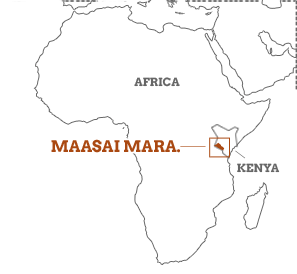Two million wildebeest, zebra and antelope thunder for 1,000km across Tanzania’s Serengeti, bottlenecking at the border to cross the final frontier: the Mara River. A terrifying obstacle course of crocodiles, big cats, vultures and steep descents into the rapids, with a thousand other hooves waiting to trample any creature that takes a tumble, the green pastures of the Masai Mara lying across the north bank must really be something for the wildebeest to take this risk.
![]()
The Masai Mara’s great renown belies its diminutive size. This national reserve is one of Africa’s smallest – yet it hosts one of its greatest wildlife spectacles.
![]()
But it is worth it, as the Great Migration pours into the Mara every year, as do travelers from across the globe to witness this spectacle. But today’s travelers will find an experience quite different to those who visited in the 1970s – one where conservation is a community effort, education is as valued as observation, and you can bush walk with and be hosted by the charismatic Maasai – the Mara’s inhabitants for centuries, and now its guardians once more.
Read on in our Masai Mara travel guide.


